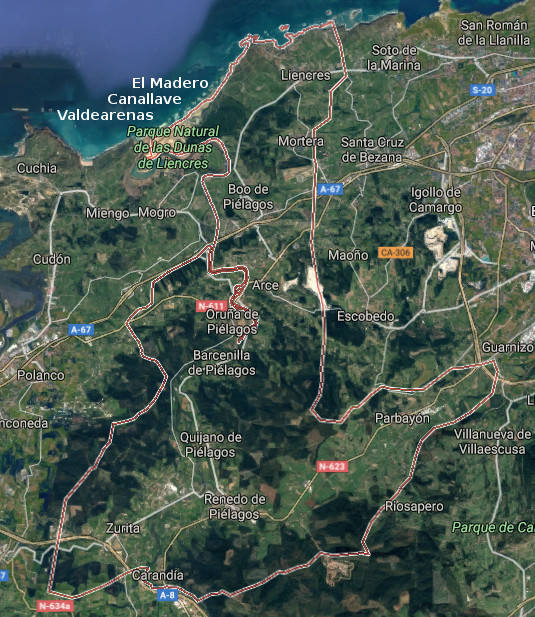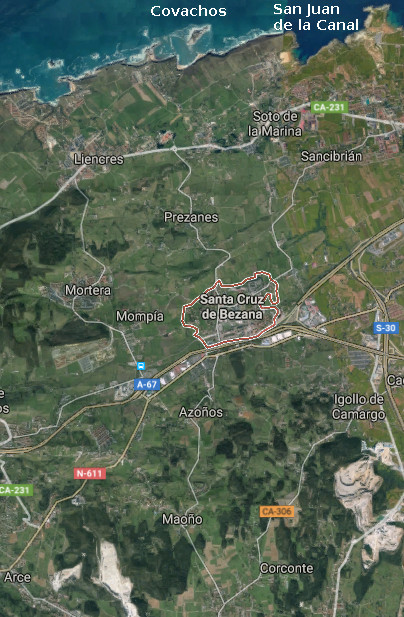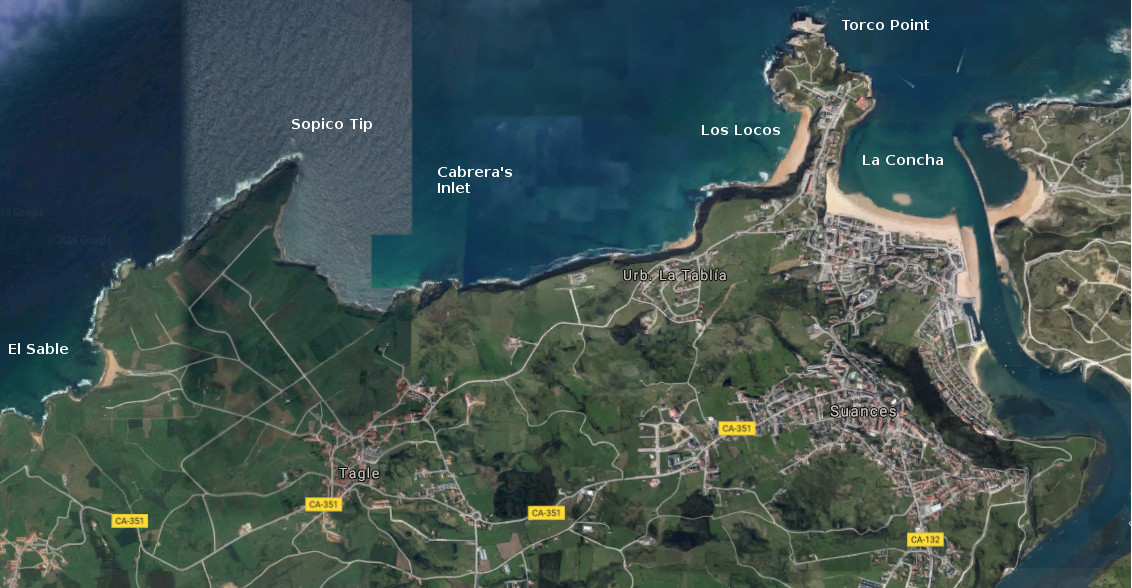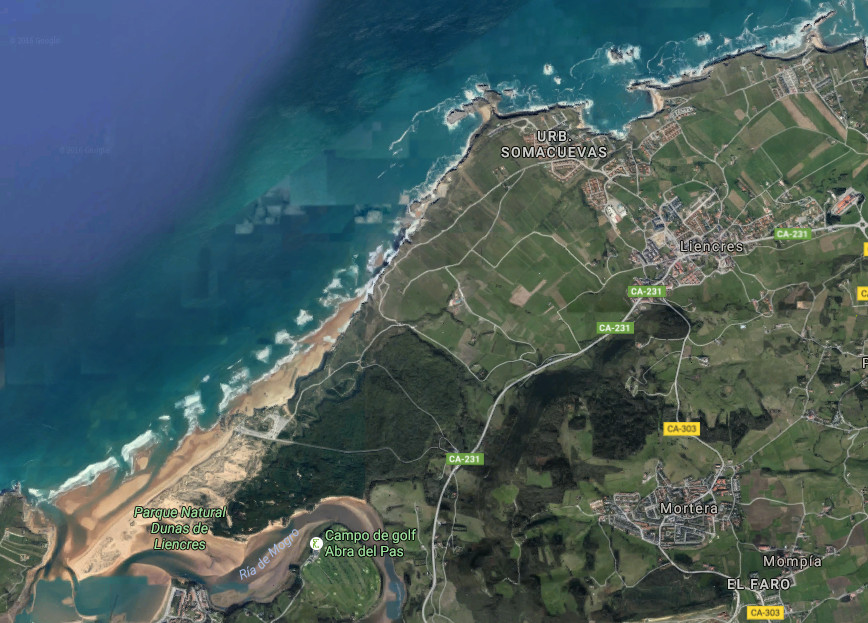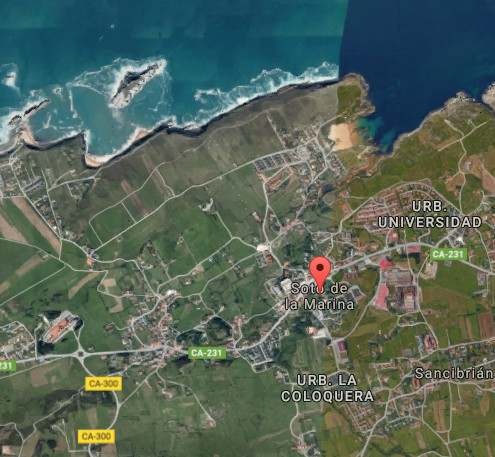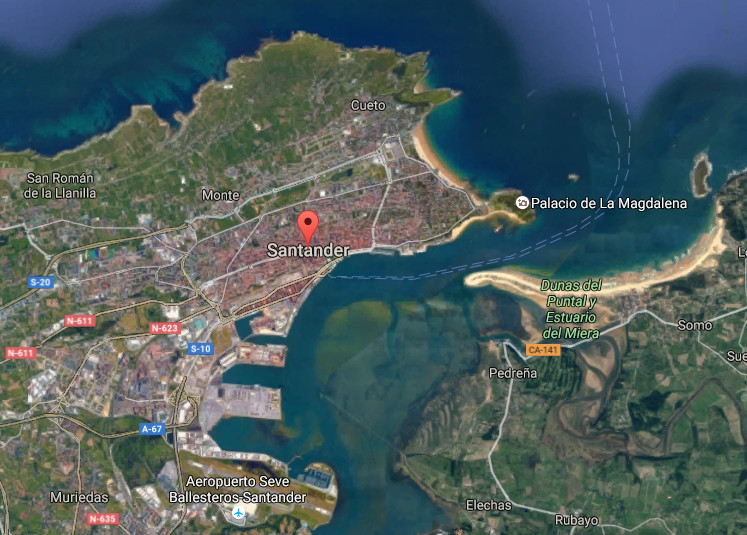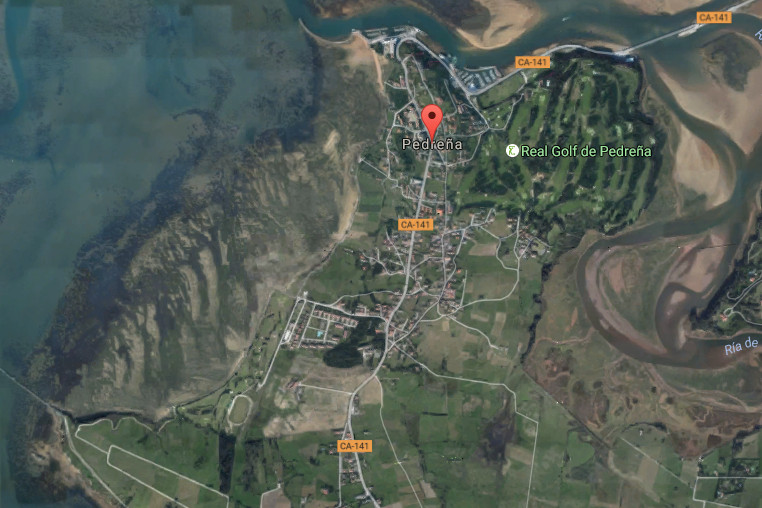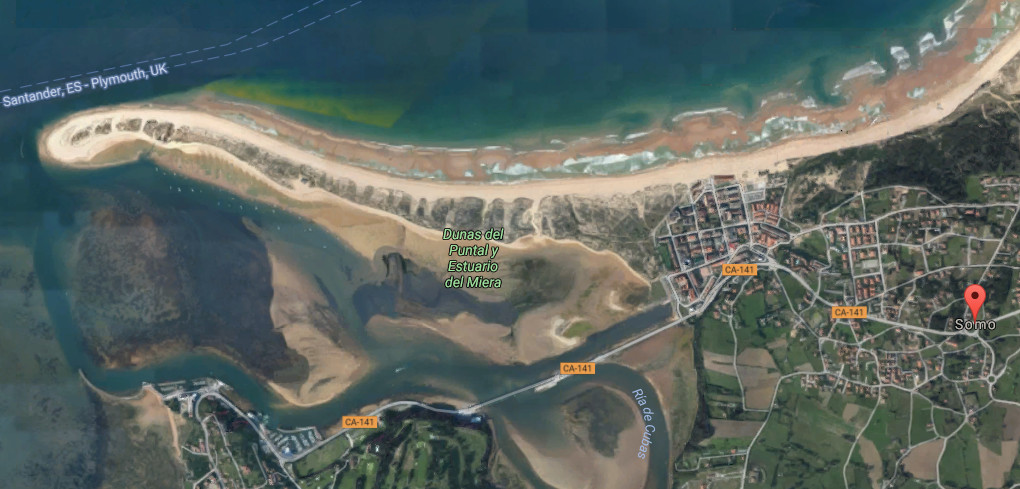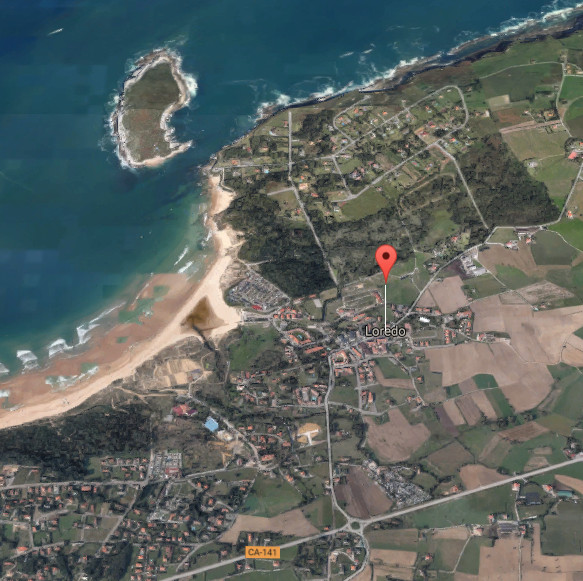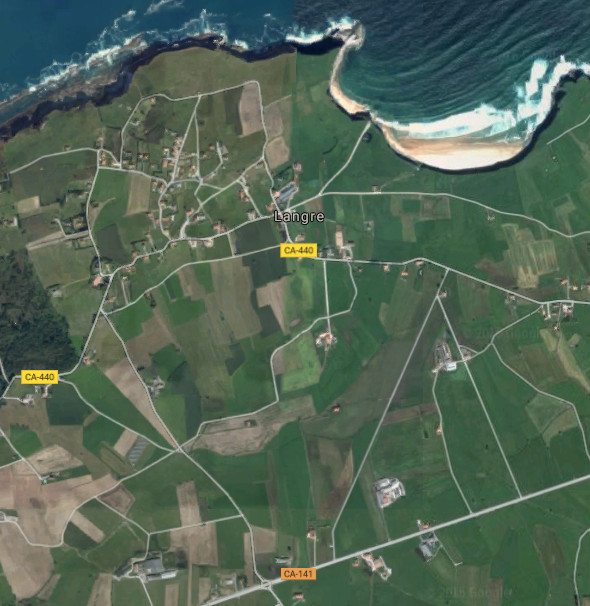Piélagos, villa
![]() El municipio de Piélagos se encuentra emplazado en la costa central de Cantabria. Ocupando la zona oeste de esta parte del litoral, está compuesto por las siguientes localidades : Arce, Barcenilla, Boo, Carandía, Liencres, Mortera, Oruña, Parbayón, Quijano, Vioño de Piélagos, Zurita y Renedo de Piélagos; capital del municipio.
El municipio de Piélagos se encuentra emplazado en la costa central de Cantabria. Ocupando la zona oeste de esta parte del litoral, está compuesto por las siguientes localidades : Arce, Barcenilla, Boo, Carandía, Liencres, Mortera, Oruña, Parbayón, Quijano, Vioño de Piélagos, Zurita y Renedo de Piélagos; capital del municipio.
La costa de Piélagos, accesible desde la localidad de Liencres, comprende parte de la Costa Quebrada y las playas de Valdearenas y Canallave. El margen que saluda al océano recibe la fuerza del Mar Cantábrico que la moldea y configura su diseño. La presencia de corrientes y vientos que registran los arenales acompañan la navegación, el paseo; coloreando la naturaleza salvaje del entorno. Los acantilados se suceden a través del sendero, apareciendo pequeñas calas accesibles en marea baja.
El territorio, habitado desde la prehistoria, dispone de varios yacimientos arqueológicos y cuevas rupestres como las de Santián o Covalejos. Destacan en todas las localidades del municipio la presencia de casas de arquitectura montañesa, hechas de piedra y madera, con un balcón típico en su frente y doble arco de entrada a la vivienda. La expresión arquitectónica presente en el municipio de Piélagos recorre varios siglos de historia. la Torre de Velo del siglo XIV, el Palacio del Marqués de la Conquista Real del siglo XVII, el Palacio de los Condes de Mortera y el Palacio de Montalbán; ambos del siglo XIX, son ejemplos indicativos de la variada muestra que vamos a encontrar.
![]() The municipality of Piélagos is located on the central coast of Cantabria. Occupying the west zone of this part of the littoral, it is composed by the following localities: Arce, Barcenilla, Boo, Carandía, Liencres, Mortera, Oruña, Parbayón, Quijano, Vioño de Piélagos, Zurita and Renedo de Piélagos; the capital of the municipality.
The municipality of Piélagos is located on the central coast of Cantabria. Occupying the west zone of this part of the littoral, it is composed by the following localities: Arce, Barcenilla, Boo, Carandía, Liencres, Mortera, Oruña, Parbayón, Quijano, Vioño de Piélagos, Zurita and Renedo de Piélagos; the capital of the municipality.
The coast of Piélagos, accessible from the locality of Liencres, covers part of the Quebrada Coast and the beaches of Valdearenas and Canallave. The margin that greets the ocean receives the force of the Cantabrian Sea that molds and forms its design. The presence of currents and winds that register the sandbanks accompany the navigation, the walk; coloring the wild nature of the environment. The cliffs take place across the path, appearing small accessible coves in low tide.
The territory, populated from the prehistory, has several archaeological deposits and caverns as the cave of Santián or Covalejos. Stand out in all the localities of the municipality the presence of houses of mountain architecture, made of stone and wood, with a typical balcony in its forehead and double arch of entry to the housing. The architectural expression present in the municipality of Piélagos crosses several centuries of history. The Tower of Velo of the 14th century, the Palace of the Marquess of the Royal Conquest of the 17th century, the Palace of the Counts of Mortera and Montalbán’s Palace; both of the 19th century, are indicative examples of the varied sample that we are going to find.
![]()
 Piélagos, village
Piélagos, village
